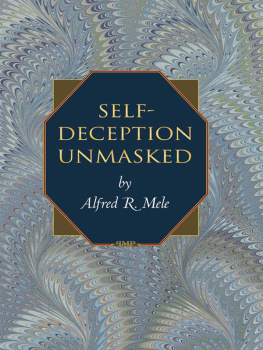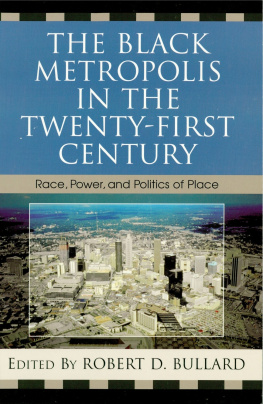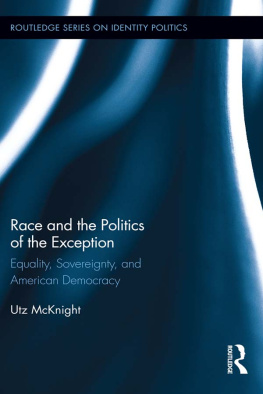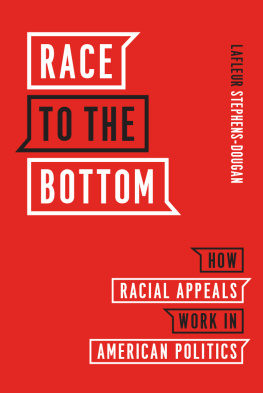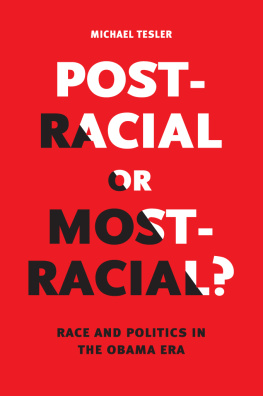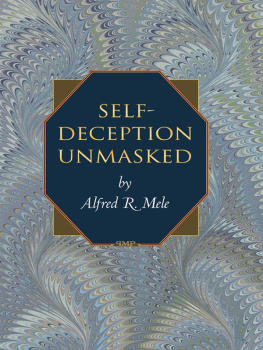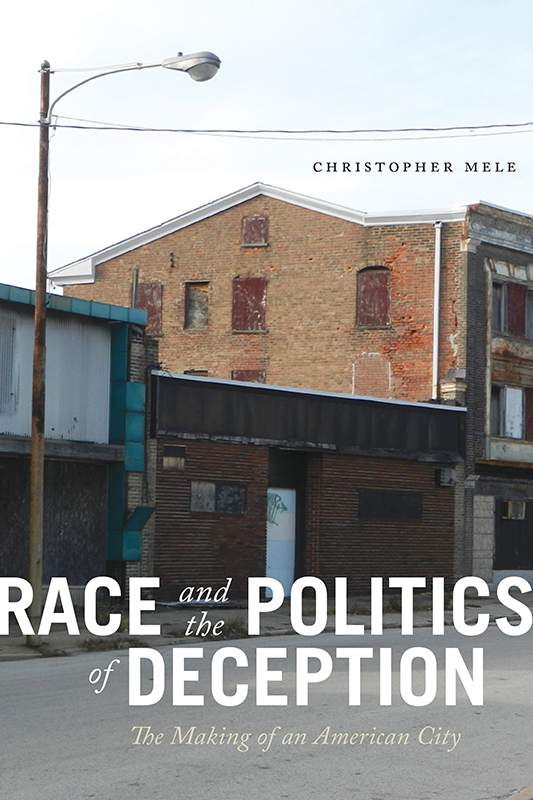
Race and the Politics of Deception
Race and the Politics of Deception
The Making of an American City
Christopher Mele

NEW YORK UNIVERSITY PRESS
New York
NEW YORK UNIVERSITY PRESS
New York
www.nyupress.org
2017 by New York University
All rights reserved
References to Internet websites (URLs) were accurate at the time of writing. Neither the author nor New York University Press is responsible for URLs that may have expired or changed since the manuscript was prepared.
ISBN : 978-1-4798-6609-0 (hardback)
ISBN : 978-1-4798-8043-0 (paperback)
For Library of Congress Cataloging-in-Publication data, please contact the Library of Congress.
New York University Press books are printed on acid-free paper, and their binding materials are chosen for strength and durability. We strive to use environmentally responsible suppliers and materials to the greatest extent possible in publishing our books.
Manufactured in the United States of America
10 9 8 7 6 5 4 3 2 1
Also available as an ebook
To my mother, Amy
Contents
My home institution, the University at Buffalo (UB), provided a supportive environment for the research and writing of this book. Grants awarded by UBs Civic Engagement Fellowship and Baldy Center for Law and Social Policy provided funding for interviews and archival research. The Baldy Center funded a manuscript workshop at the American Sociological Association annual meeting in Chicago in 2015. I am greatly indebted to Professors Rodney Coates, Cedric Johnson, and Michael Maly who signed on to the manuscript workshop, read a complete first draft, and provided me with critical comments and supportive encouragement over three amazing hours. My understanding of the sociology of race improved immensely thanks to Nancy Denton, David Wilson, and several other excellent scholars who attended a workshop on new forms of racial segregation that fellow UB sociologist Robert Adelman and I co-organized at the Baldy Center. The workshop provided an opportunity for all of us to try out new ideas and led to the publication of a co-edited book, Race, Space, and Exclusion: Segregation and Beyond in Metropolitan America (2015).
I am indebted to several individuals who have provided many different kinds of support in seeing this project through from start to finish. Margaret Johnson, the coordinator of the Delaware County Historical Society Research Library is exceptionally knowledgeable of all things Chester. The research librarians at UB, the University of Delaware, Widener University, Temple University, and Swarthmore College were always accommodating and helpful. Over the course of research and writing this book, I benefited from the support of Errol Meidinger and Laura Wirth of the Baldy Center and steady encouragement from my colleagues and graduate students in the Departments of Sociology and Geography at UB, particularly Robert Adelman, Aaron Lee, and Peng Gao. Many thanks as well to Kelly Crean and Diane Holfelner for putting up with my many requests. I am especially grateful to Jean Kaplan for all her hard work and diligence as an amazingly skillful editor. I am very thankful for the support and encouragement of Ilene Kalish, executive editor, and Caelyn Cobb, assistant editor at NYU Press.
My friends and family members graciously tolerated my many years of obsession with anything to do with Chester. I am particularly grateful for the love, support, and kindness of Charles Hallmark, Genevieve Hinkle, Kelly Hinkle, Emilie Broderick, Mary Miller, Monica Alvarez, Amy Taylor, Val Marie Johnson, Diane Levy, and Victor Mirando. I thank you all.
My memories of Chester, Pennsylvania, stretch back to my early childhood despite the fact that I did not visit the city until I was in my late forties. I grew up in the suburbs of North Wilmington, Delaware, a mere fourteen miles and barely twenty minutes south of Chester on Interstate 95. But my life was worlds apart from that of people in Chester, as was the case in most of the 1970s suburbs of single-family homes, wooded parks, and shopping malls of cities like Philadelphia, Camden, and Wilmington. Or so I was told. When I was a child, acting up or misbehaving often came with an admonition from adults that I would be sent to Chester. A high school classmate whose uncle was a Chester police officer told stories of found bodies, drug world shoot-outs, gang wars, and most memorably, entire neighborhoods where even the police dared not go. When I was sixteen, a massive fire consumed Chesters Wade toxic chemical dump for days. I can recall watching live news coverage of towering flames seeming to engulf the Commodore Barry Bridge and highway officials fears that the steel structure might buckle under the intense heat. Twenty years later and having moved away, I read in a follow-up news article that nearly a quarter of the two hundred firefighters had suffered from deadly cancers due to their exposure to chemicals leaking at the dump.
My first visit to Chester peaked my curiosity as a sociologist, which eventually led to the research for this book. Caring for my aging mother included the first of many trips to the Harrahs Chester casino and racetrack, which opened in 2007 and quickly attracted senior citizens drawn to its rows of blaring slot machines and the elusive promise of jackpots. It was the first time my mother had been to Chester since the 1940s. Back then the city was the Delaware Valley nightlife destination, where a multitude of dance clubs, music halls, and corner bars served up alcohol and entertainment well into the early morning hours. Her nostalgia mimicked that of thousands of white suburbanites, including those who visit the website OldChesterPA.com to view and post photographs of the good old days. To me, the city seemed a jumbled mix of land uses, each a testimony to a different period of urban change in the past one hundred years. The new Harrahs, resembling a warehouse bathed in pink neon, sat across a narrow street from a minimum security state prison (constructed of pink bricks). The remainder of the waterfront housed metal shops, a recycling facility, and an energy-from-waste plant that incinerated trash generated by all of Delaware County and some municipalities in the tri-state region (including since 2015 New York City). Near the Commodore Barry Bridge, where the Wade fire had blazed out of control for days, the massive, Beaux Arts-style Chester Waterside Station of the Philadelphia Electric Company had been repurposed as an office building and anchor for Rivertown, a planned upscale mixed-use district. Across the Industrial Highway, sits the city proper, with its partially abandoned downtown commercial district, barren and overgrown lots, and neighborhoods of tidy redbrick row houses. In many ways, Chesters past and present differ little from any number of small- to medium-sized former industrial cities in the northeastern United States, among them Camden, Wilmington, Baltimore, and Newark.
On our return home, we spotted a Chester Yes! billboard along the Industrial Highway proclaiming a new, revitalized Chester anchored along the waterfront was in the making. Not the Chester of my childhood minds eye, populated with images of violence, fire, and drug wars, but not that of my mother either, of busy shopping streets, brightly lit diners, and crowded saloons. That the deindustrialized, minority city is imagined quite vividly (but incompletely and more likely, erroneously) from a white, suburban perspective is of little surprise and of little research interest to me. Nor have I been interested in unearthing the real Chester in some effort to correct the middle-class, suburban myth of the minority ghettoa project that might well lead to another incomplete, albeit more sympathetic, reification (as I discuss in chapter 6). Instead, what piqued my interest was how the range of negative images and associationsChesters notoriety, the stereotypical view of the majority of individuals and families who live theremight play into a complex and surreal politics of urban development that could produce a prison, a casino, one of the countrys largest waste incinerators, a soccer stadium, and the promise of upscale housing and shopping. As I spent more time learning about the city and its past, I discovered how the politics of Chesters development pivoted around race and, specifically, ideas about race and racial minorities. It soon became clear to me that the forces that transformed Chesters neighborhoods, downtown, the waterfront, and its surrounding suburbs were articulated, justified, and enabled by an urban politics that relied on the manipulation of raceor more precisely, fictions and falsehoods that comprise the images, rhetoric, and ideologies of race. It also became evident that the manipulation of race was a consistent, intentional, and deliberate strategy in the local politics of development. In short, how might the employment of race as a convoluted yet useful set of ideas about others function as a strategy in the development of Chester? This book is an attempt to answer that by digging into the citys past and exploring episodes in which the representations of minorities were intentionally manipulated to foster spatial changes in the city and the region, moments in which the saliency of race had little if anything to do with the ordinary experiences of people who lived in Chester and everything to do with the exaggeration and just plain falsification of impressions and representations of race. Although this book focuses on one city, there is little to suggest that the enduring significance of race to urban politics is unique to Chester.
Next page


